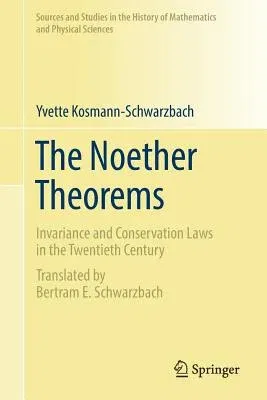In 1915 and 1916 Emmy Noether was asked by Felix Klein and David Hilbert
to assist them in understanding issues involved in any attempt to
formulate a general theory of relativity, in particular the new ideas of
Einstein. She was consulted particularly over the difficult issue of the
form a law of conservation of energy could take in the new theory, and
she succeeded brilliantly, finding two deep theorems.
But between 1916 and 1950, the theorem was poorly understood and
Noether's name disappeared almost entirely. People like Klein and
Einstein did little more then mention her name in the various popular or
historical accounts they wrote. Worse, earlier attempts which had been
eclipsed by Noether's achievements were remembered, and sometimes figure
in quick historical accounts of the time.
This book carries a translation of Noether's original paper into
English, and then describes the strange history of its reception and the
responses to her work. Ultimately the theorems became decisive in a
shift from basing fundamental physics on conservations laws to basing it
on symmetries, or at the very least, in thoroughly explaining the
connection between these two families of ideas. The real significance of
this book is that it shows very clearly how long it took before
mathematicians and physicists began to recognize the seminal importance
of Noether's results. This book is thoroughly researched and provides
careful documentation of the textbook literature. Kosmann-Schwarzbach
has thus thrown considerable light on this slow dance in which the
mathematical tools necessary to study symmetry properties and
conservation laws were apparently provided long before the orchestra
arrives and the party begins.


